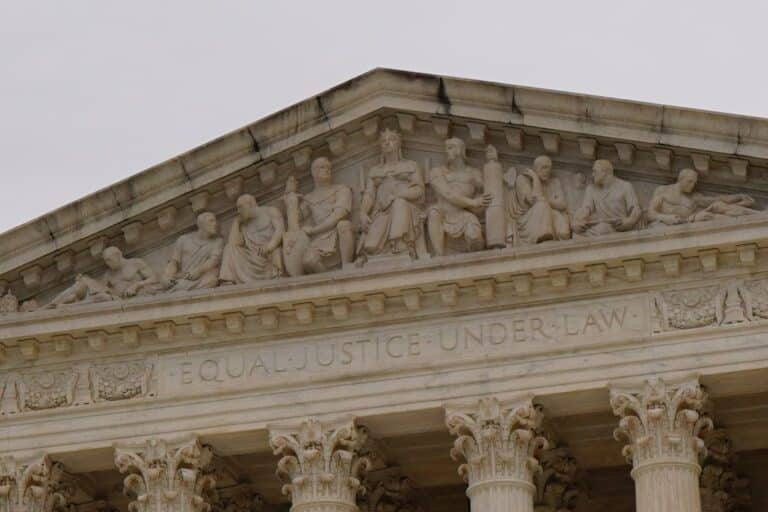The Supreme Court of the United States (SCOTUS) placed a new twist on a familiar pattern in its treatment of Second Amendment cases this week.
On Monday, the justices declined a request by a Florida man to review his conviction over possessing a firearm as a previously convicted felon. Instead, they opted to grant, vacate, and remand (GVR) that decision back to the Eleventh Circuit Court of Appeals to be re-examined with the Court’s US v. Rahimi decision in mind.
While a GVR in light of Rahimi is nothing new for the Court in recent months, the motivation for this latest one is harder to decipher. Every other Second Amendment case sent back down to date has involved a decision that predated its holding on the constitutionality of the domestic violence restraining order gun ban. But the case the justices just sent back, US v. Rambo, was already decided in a post-Rahimi world.
“The Supreme Court’s decision in United States v. Rahimi did not abrogate Dubois or Rozier because it did not ‘demolish’ or ‘eviscerate’ the ‘fundamental props’ of those precedents,” the Eleventh Circuit panel wrote in Rambo last July. “Rahimi did not discuss § 922(g)(1) at all, nor did it undermine our previous interpretation of Heller.”
Here are a few ways to interpret the justice’s latest move.
SCOTUS Tipping its Hand
One possible way to view the vacatur and remand of the Eleventh Circuit’s decision is that the Court is telegraphing its preferred application of Rahimi to the question of gun rights for convicted felons.
After all, the Eleventh Circuit’s decision in Rambo held that its precedents foreclosed any challenges to the felon-in-possession ban regardless of whether a person was convicted of non-violent offenses. By contrast, the Court in Rahimi seemed to endorse a narrower standard for disarmament.
“We conclude only this: An individual found by a court to pose a credible threat to the physical safety of another may be temporarily disarmed consistent with the Second Amendment,” Chief Justice John Roberts wrote for the majority in Rahimi.
And while the Court aimed that holding squarely at the federal gun ban for those subject to domestic violence restraining orders rather than convicted felons, it may nevertheless view its focus on individualized judicial findings of dangerousness and temporary disarmament as incompatible with a lower court standard that provides blanket approval of lifetime disarmament for all types of felons.
SCOTUS Requesting More on Rahimi
Another possible interpretation of the GVR is that the Court is sending a softer request to the lower court, which is unrelated to what it decided but how it got there. In other words, the move could be a nudge for the lower court to do its part in developing post-Rahimi Second Amendment jurisprudence.
Though the Eleventh Circuit invoked Rahimi in the first go-round, it didn’t exactly give the precedent a thorough treatment in its four-page, unpublished opinion. In fact, the decision was only briefly referenced three times, all in the penultimate paragraph of the opinion. Therefore, the Court may want to see a deeper analysis of its precedent so it can evaluate how the lower courts are interpreting its application to other gun laws.
There are procedural considerations that could lend this view some support. The ruling the lower court in Rambo relied on most to reach its decision, US v. Dubois, was decided by the Eleventh Circuit before Rahimi. The justices also opted to GVR Dubois itself just last month. Therefore, the Court might view a case decided based almost entirely on pre-Rahimi precedent, that has since been vacated no less, as an insufficient review of Rahimi.
Of course, this explanation is also tempered by the likeliest outcome of the GVR. Though it has employed them consistently, the Court’s previous GVRs have not borne much fruit. Of the seven prohibited persons cases it GVRed immediately after Rahimi, each has resulted in the same final holding after the lower courts concluded Rahimi didn’t have much to say about their cases.
SCOTUS Punted
A third possible reading of the order is that the justices simply did not want to take this particular case, or perhaps any felon-in-possession case, and it cleared its plate of the issue for now.
It’s unlikely they can avoid all felon cases for too long, considering the great consternation different interpretations of the ban are causing among federal law enforcement and the lower courts. The law is also the most commonly charged federal firearms offense, and it has explicitly been called into question in at least one region of the country, something that tends to presage an eventual cert grant.
The justices also may not have liked Rambo as a case to settle the legal questions at play. After all, it came before them on appeal by a public defender in an active criminal proceeding, with a skimpy appellate court decision to go off of. There also appears to be some murkiness surrounding the nature of Rambo’s predicate offenses. His legal team’s petition for certiorari refers to his status as a “non-violent” felon. Yet, it also describes him having been convicted in 2015 for “battery on a corrections officer” in addition to at least three other separate weapons charges over a span of seven years.
Contrast that fact pattern and procedural history with a candidate like Range v. AG, where the case record is far more developed, and the respondent in question is highly sympathetic (his singular conviction was indisputably non-violent). He also has the support of a high-profile constitutional law firm to represent him before the Court.
The justices may want to wait for a more robust case with a more sympathetic plaintiff before addressing something as publicly controversial as the gun rights of convicted felons.
Of course, these interpretations rely on tea leaf reading, a potentially perilous endeavor for an institution as opaque as the Supreme Court. Only the justices themselves know what their actions genuinely entail. However, the unusual step of vacating and remanding a decision to be reconsidered in light of an already-cited case suggests something deeper could be at play.






